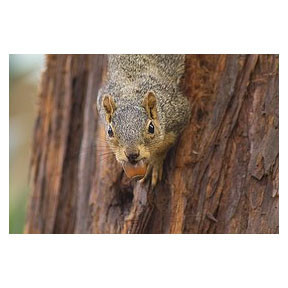Acorns Falling All Around
Green scene
You know it’s August when you start hearing a regular thump, thump, thump throughout the day. That’s your oak tree flinging acorns down on your head, with the squirrels joining in the fun. First, they stuff themselves with the best parts and then they throw away the less tasty bits. Finally, you turn around and realize that the yard is heavily covered with acorns – large and small, whole or chewed. And if your patio does double duty as a basketball court, each game begins with a thorough sweeping.
Every summer, I plant some tomatoes but no other vegetables. Yet, looking around at the abundance of acorns, I feel it is terribly wasteful to take hundreds of pounds of nuts and throw them into recycling. Surely, they could be put to better use! In fact, acorns have been used as food over the centuries around the world. Amerindians generally used them as a foraged food, and in California, it was a mainstay of the diet. However, acorns need to be treated before eating since they are full of tannins – a chemical whose name is derived from Tanna – the old German word for oak trees. This chemical was used for the tanning of leather and is poisonous, and so, before acorns can be used as food, it must be thoroughly leached out with a water treatment.
Last year I went onto the Internet and learned that there are two methods for extracting the tannins from acorns. One method uses hot water and other uses cold. Just for fun – and because you can never tell where the next interesting culinary marvel will come from, I decided to try preparing some acorns for eating. Since the hot water method seemed the fastest, I tried that one. It turns out that even that method took both a fair amount of time and a fair amount of water. In the middle of the process I ran out of steam, and so I have not yet actually tried my first hot-acorn breakfast cereal.
And yet, watching the squirrels scarfing down the acorns, I began thinking about wildlife, which depends upon the garden and forest fruits that we ignore or cannot eat. A mature oak forest can produce 700 pounds of acorns per acre and an older tree can yield 150,000 nuts. My red oak, which is estimated to be 100 years old, seems to be sharing almost that many nuts with me. As the fall progresses, I expect to see the returning Juncoes hovering over and eating my Echinacea’s seed heads. There is also heightened interest by city folk in foraging wild plants. Sadly, foraging can be a double-edged sword. When Europeans first landed in the New World, the Indians they encountered were able to live off the land in a way that most of us cannot even imagine. However, if too many people start taking to the woods to harvest edibles, greater pressure is put upon the competing wildlife that has nowhere else to “shop.” However, for the sheer pleasure of understanding our natural world more deeply, “Wildman” Steve Brill has been leading exciting foraging tours for years in our area. The New York Botanical Garden also has several classes to enable us to recognize and appreciate local edibles.
Wild food – collectively known as mast – comes from an old English word meaning “nuts of the forest, particularly those used for fattening domestic pigs.” Parenthetically, there is even an artisanal pork product known as “acorn-finished pork,” where the meat comes from pigs that forage for forest nuts. Mast comes in two forms – hard and soft. Hard mast refers to the nuts of various trees such as acorns, hickory and beechnuts. Incidentally, east of the Rockies, oak trees – genus Quercus, meaning beautiful tree – are the most important source of mast. West of the Rockies, they are second in importance, after pine trees. Soft mast is everything else – buds, berries and stone fruits, such as peaches. Soft mast plants include hawthorns, roses, mountain ash, and sugar maples.
And what of the species of wildlife species that depend on acorn bounty? More than 150 species rely heavily on it. They include deer – which we do not yet see in Riverdale – squirrels, which eat some, bury some and generally act as oak gardeners, opossums, and bears. I’ve even seen a blue jay eat small pieces of acorn discards from squirrel feeding.
With more acorns pelting me every day, I decided to look on YouTube again for instructions on how to make them edible. Maybe I’ll go out later, collect a basketful and see what I am missing.
For more information about Steve Brill’s local tours, head to www.wildmanstevebrill.com.
For instructions on how to make acorns edible, check out www.youtube.com/watch?v=QitkIGNwUgs






